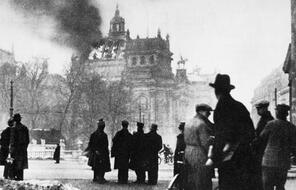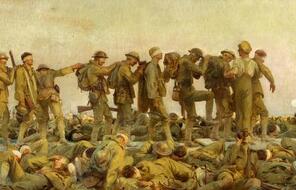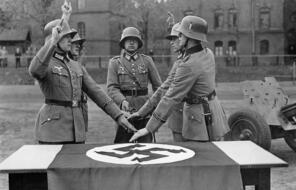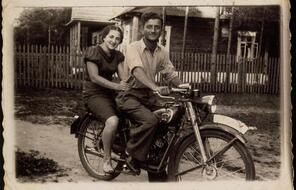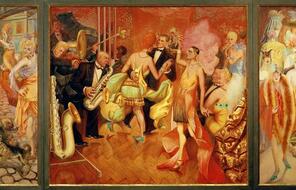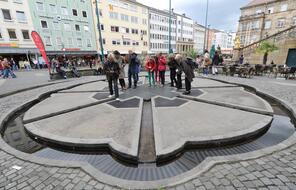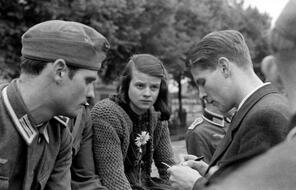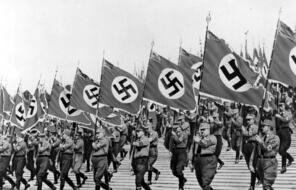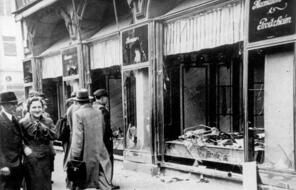Schooling for the National Community
Subject
- History
Language
English — USUpdated
Nazi leaders worked to influence young people in youth groups, in their families, and on the streets. Schools also had a key role to play. After the Nazis came to power in 1933, they quickly passed new laws to make public education reflect and teach their nationalist and racial ideologies. Jewish teachers were fired from their posts, and other teachers were encouraged to join the National Socialist Teachers League; by 1936, over 97% of teachers were members. Nazi leaders also created new curricula and textbooks to be used throughout the country.
Gregor Ziemer was a teacher and headmaster at the American School in Berlin (a school for the children of American citizens living in Germany) for most of the 1930s. During this time, Ziemer toured German schools and eventually wrote a book called Education for Death, which was first published in 1941. In it, Ziemer describes the schools he visited:
A teacher is not spoken of as a teacher (Lehrer) but an Erzieher. The word suggests an iron disciplinarian who does not instruct but commands, and whose orders are backed up with force if necessary.
Matters of the spirit are frankly and energetically belittled. Physical education, education for action, is alone worthy of the Nazi teacher’s attention. All else can be dismissed as non-essential . . .
The Nazi schools are no place for weaklings. All children must, of course, finish the primary school before they are ten; but after that the schools are proving-grounds for the Party. Those who betray any weakness of body or have not the capacities for absolute obedience and submission must be expelled. . . .The regime draws a sharp distinction between girls, inherently weak, and boys, natural exponents of strength. Boys and girls have nothing in common. Their aims, their purposes in life, are fundamentally different. Boys will become soldiers; girls will become breeders. Co-educational schools are manifestations of decadent democracies and hence are taboo.
[Dr. Bernhard Rust, the Nazi Minister of Education] decrees that in Nazi schools the norm is physical education. After that, German, biology, science, mathematics, and history are for the boys; eugenics and home economics for the girls. Other subjects are permissible if they are taught to promote Nazi ideas. Spiritual education is definitely unimportant. 1
History and science were the subjects most influenced by Nazi ideology. Soon after Hitler took power, a new course in “race science” was added to the curriculum in every German school. The Nazi minister of education outlined the objectives of the course:
- Give pupils an insight into the relationship, causes and effects of all basic facts having to do with the science of heredity and race.
- Impress the pupils with the importance of the science of heredity and race for the future of the nation and the purposes of the government.
- Awaken in the pupils a sense of responsibility toward the nation, as represented by both its ancestry and its posterity; imbue the pupils with pride in the fact that the German people are the most important exponent of the Nordic race. . . . 2
Racial instruction was not limited to a single course. It was included in all classes, even arithmetic. One book, titled Germany’s Fall and Rise—Illustrations Taken from Arithmetic Instruction in the Higher Grades of Elementary School, asks, “The Jews are aliens in Germany—in 1933 there were 66,060,000 inhabitants of the German Reich, of whom 499,682 were Jews. What is the percentage of aliens?” 3
Connection Questions
- According to Gregor Ziemer, what were the most important subjects in Nazi schools? What does that suggest about the values of society at the time?
- What was the role of girls and women in the Nazis’ ideology? What was the role of boys and men? Today, many people would strongly disagree with the Nazis’ decision to make gender the basis for extreme differences in schooling. What stereotypes about girls and boys did the Nazi program rely on?
- Why do you think the Nazis added the new course on race science to the school curriculum? How did this new course, based on “science,” reflect the ideas about “science” and race that you learned about in Chapter 2?
- To what extent should school be designed to meet the needs of the individual? To what extent should it be designed to meet the needs of the community or the state?
How to Cite This Reading
Facing History & Ourselves, “Schooling for the National Community”, last updated August 2, 2016.

